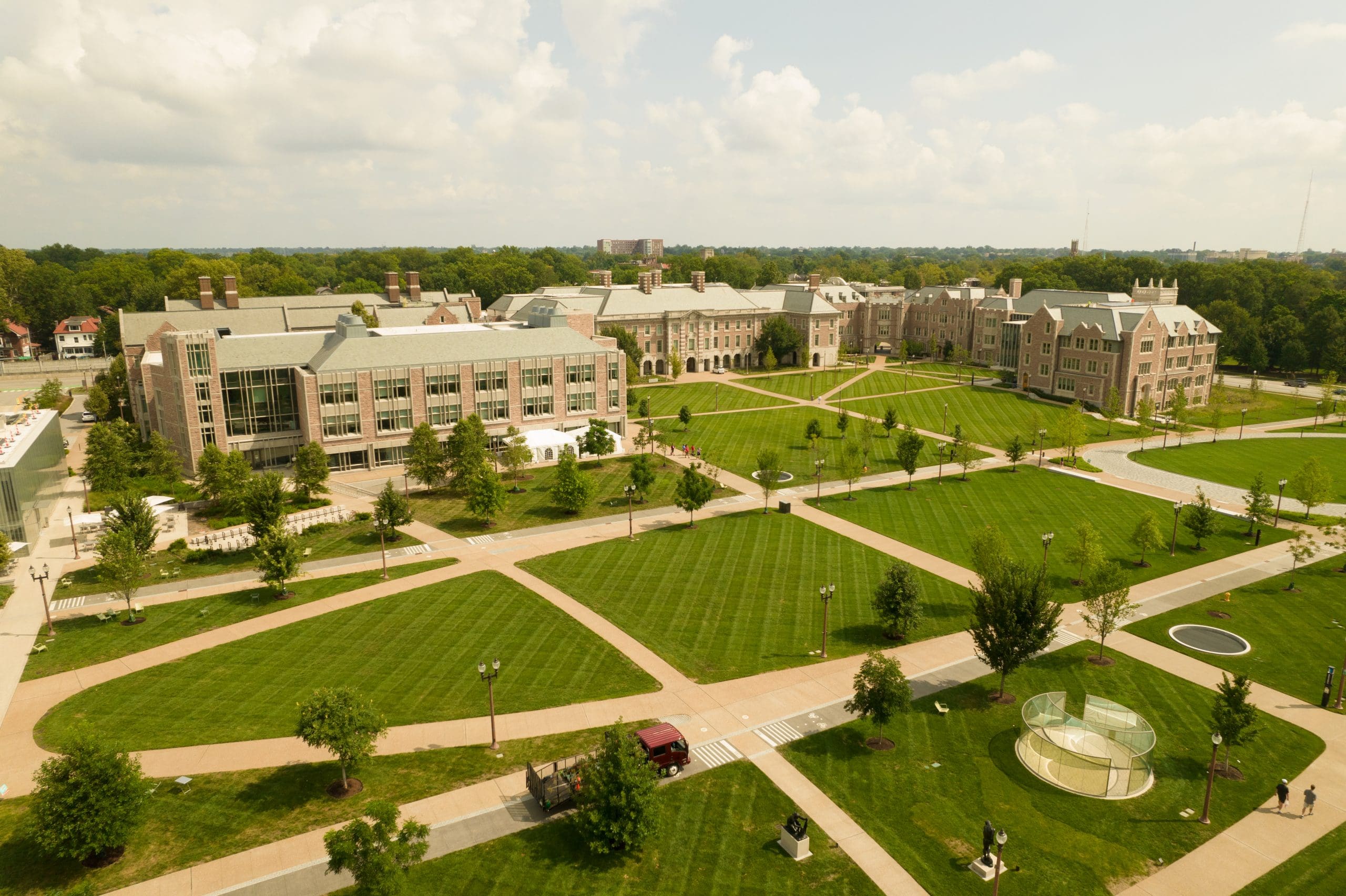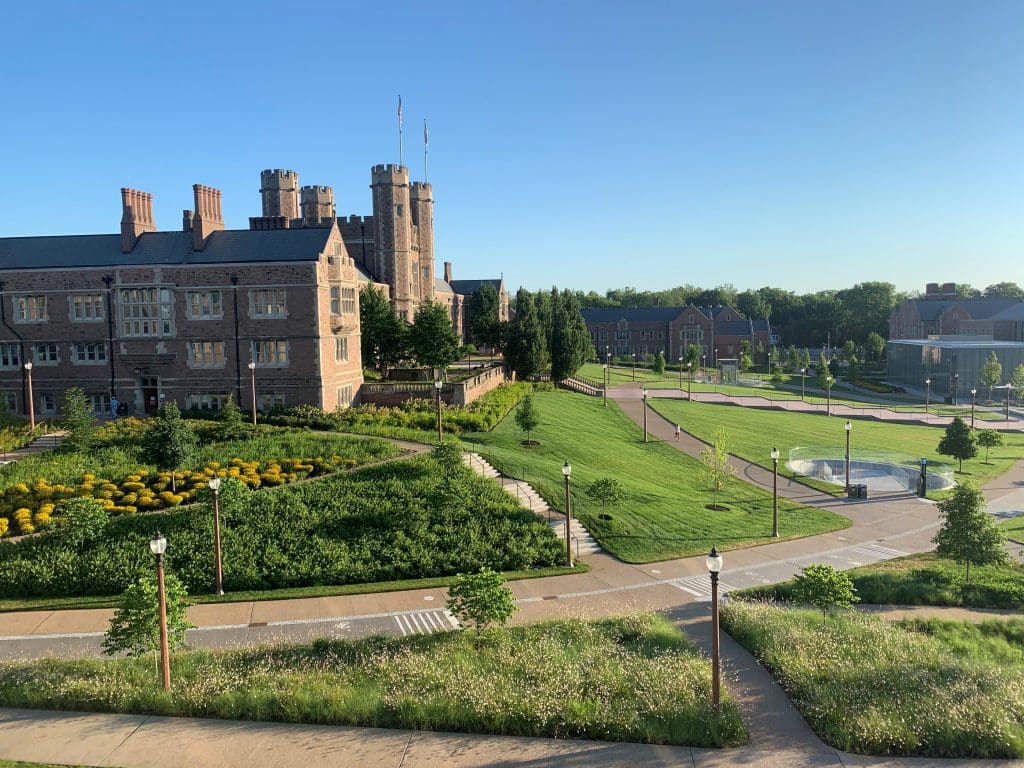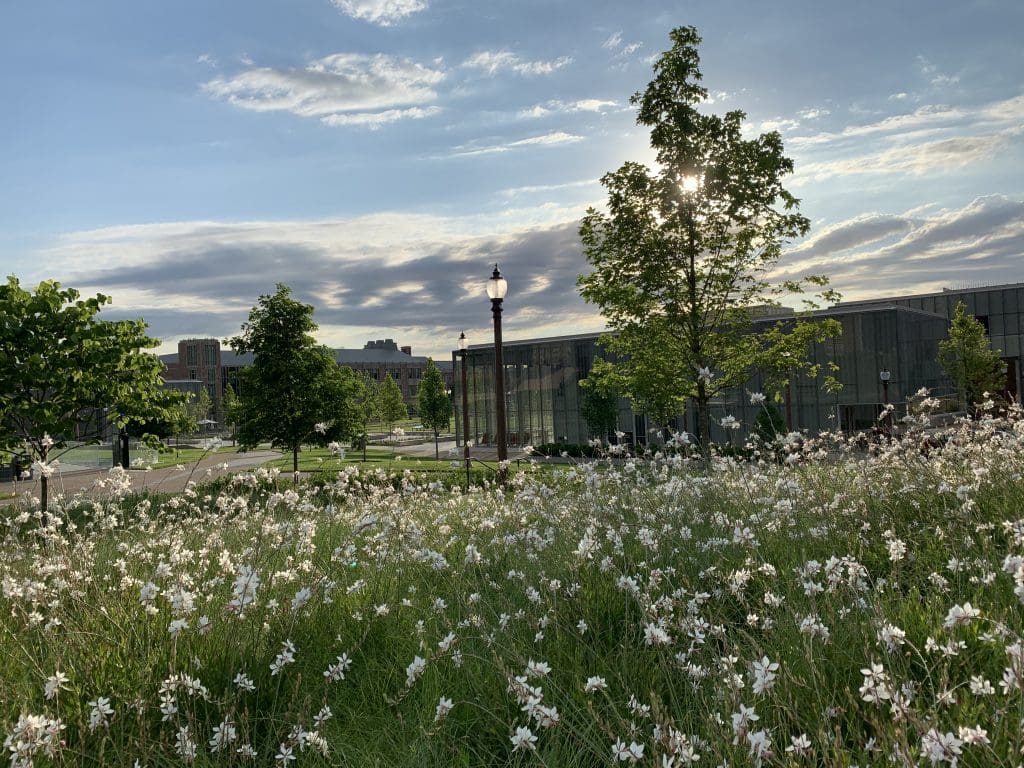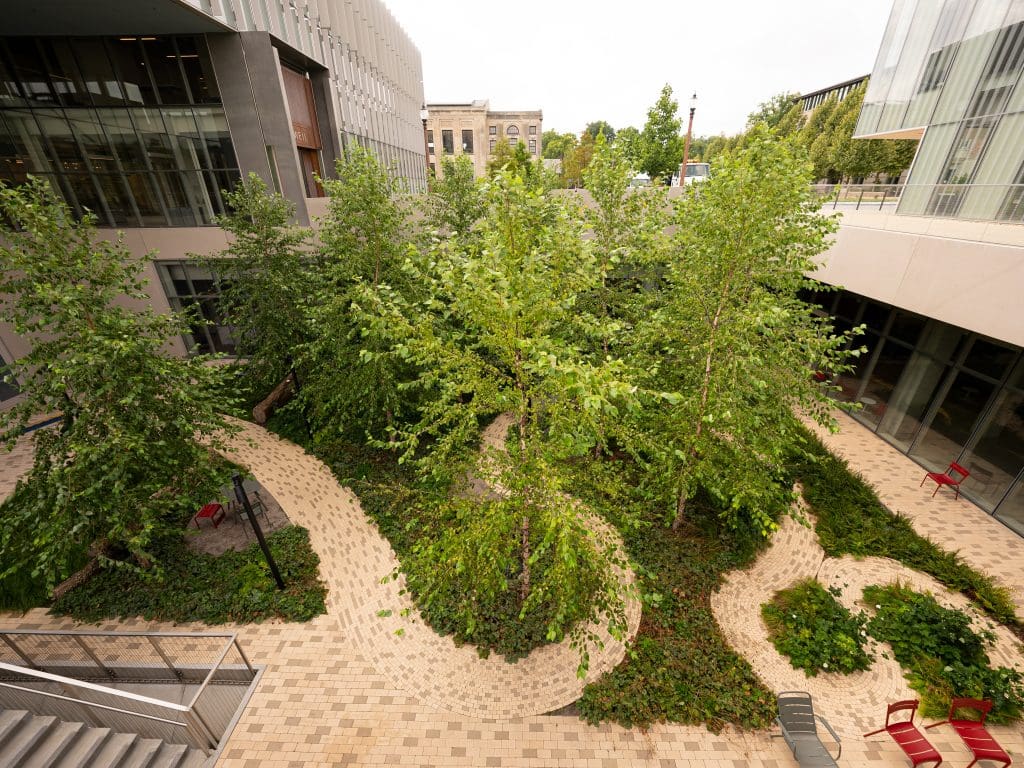
The Danforth Campus of Washington University in St. Louis, Missouri, wanted a new entrance onto campus that provided easy access to newly built institutional buildings.
Washington University also wanted adequate parking and landscaping to match their existing beautiful campus. This East End Transformation project was taken on by Focal Pointe Outdoor Solutions, based in Caseyville, Illinois.

Focal Pointe Outdoor Solutions’ work on this large-scale project earned them a Gold Award in the 2021 NALP Awards of Excellence.
“It is a very exciting award to receive,” says Brian Bobikiewicz, director of construction. “An outside neutral party found value and commitment in the work that we performed and expressed through the entry process. It shows what our team is capable of accomplishing when we all strive for the same goal and results. It is an honor to be placed in the gold category with other high-performing companies. I could not be prouder of my team and the results that their efforts have achieved.”
According to Bobikiewicz, the initial install process took over 16,000 man-hours spread over the course of 18 months. Focal Pointe had to work on a tight deadline, which they overcame by working through rain, winter and on weekends.
“There were milestone dates along the way and sections of the project that required us to ramp up to 25 people per day in order to meet specific deadlines,” Bobikiewicz says.

The project included small flowerbeds placed along walkways and near the windows of university buildings. Naturalized plantings were placed around the walkways as well to maintain the natural ecosystem and the feeling of walking through a meadow.
Bobikiewicz says the biggest challenge of the project was the logistics as the site was not very big and had only one point of entry and exit.
“The project was sequenced from back to front and with landscaping, we are typically the last ones to finish, so getting all of our materials past an active worksite and working in partnership with every single trade that was under the same constraints as us was a huge challenge,” he says.

To not detract from campus views, a parking structure was built under the project adding a unique challenge when planting large caliper trees. Despite the parking structure, the trees have been able to flourish since it was a ground-up installation creating the best possible environment for a tree to grow.
“From the underground drainage system to the multi-layer soil system install, to the irrigation tree pit emitters, the trees could not be happier for their new home,” Bobikiewicz says. “Part of the planting requirement was to remove the cage and burlap from every root ball and to loosen the root mass on each ball to have excellent soil to soil contact on the new trees. We have since had to come in a transplant a few trees due to site changes and the amount of lateral root growth into surrounding soils has been amazing.”

The open air space between the two campus buildings features a sunken garden with a walkway and seating area, providing an oasis in the middle of bustling St. Louis. An irrigation system sustains the river birch trees planted here. Wind passes from one entrance of the underground parking garage to this area causing the trees to sway.
“For the river birch grove in the sunken garden there really wasn’t anything to tie the trees to except for other trees,” says Cody Azotea, lead horticulturist for Focal Pointe’s Washington University operations. “We used ArborTie to cable the trees together for a year. We have since removed a majority of the ArborTie to allow the trees to naturally grow and support each other.”
Another challenge was how the soil composition was over 80 percent sand, calling for meticulous hand watering to keep them healthy while the project continued.
“There were 165 zones on the system, averaging 20 min run time…so roughly 55 hours total,” Azotea says. “When temperatures are in the upper 90s that makes it very difficult to keep up. We have now taken around 50 zones off that initial system and put them on separate water sources.”
Interested in participating in the Awards of Excellence? Be sure to enter your projects by July 11, 2022.

